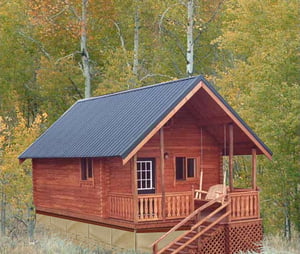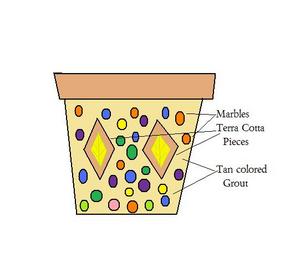This story of financial independence is one that could apply to anyone who can focus on a goal and work toward it. Although the individuals depicted herein are fictitious, the financial dream outlined below is realistically achievable for many.
In 1992, George and Sandy Ravengroff bought a fix-it-up home on the outskirts of town for $54,000 while both had jobs making $30,000 and $35,000 respectively. They were in their early 30s with 2 children (11 and 12). Their “take home” pay was $4,063 monthly, and their monthly expenses included: a $539 mortgage payment (with property taxes and insurance), utilities, car-related costs, groceries, and miscellaneous expenses (clothing and other necessities, etc.), which all added up to $1,749.
They were free to do as they pleased with the remaining $2,314 monthly cash. Therefore, $1,200 went into a “hands off” savings fund that paid 3.5% annually. The remainder, $1,114, went toward home repairs, college tuition, family vacations and/or entertainment. The children earned money with paper routes, lawn care, and other services that were needed throughout their community. In addition, the whole family learned to become successful at selectively shopping at yard sales and reselling items on eBay. They lived frugally. Being vegetarians, their monthly grocery costs were far less than carnivorous families, and they bought items in bulk whenever possible and reasonable.
George and Sandy both shared a common goal of becoming financially independent as soon as possible so that they would have more years to enjoy a leisurely lifestyle together. Thus, they considered their home an investment that they could grow, and in their spare time, they refurbished the home and landscaped the grounds.
Twelve years later (2004), after averaging 3.5% annual pay increases, their total joint annual income had grown to $101,657, and they finished paying for ½ of each child’s college tuition (the other half having been paid for by the children’s part-time jobs and college loans). With the new absence of college and child care expenses, they were able to double their monthly contributions to their personal savings plan to $2,400 and make final touchups to the home in preparation for selling it after the final mortgage payment in three more years.
Finally, in 2007, with a total combined income of $108,898 and in their mid-to-late 40s, George and Sandy made the last mortgage payment on their 15-year home loan. Their once-secluded lot was now surrounded by new homes, which had boosted their real estate value. They sold their “makeover” home for $249,000, cashed in on their personal savings account which had now grown to $268,794 over 15 years, and sold one of the two cars for $16,200, leaving them with $539,994 in cash.
Their “financial independence” plan included a log cabin on enough land to become somewhat self-sufficient. Their search led them to a log cabin kit priced in the low-20s from Conestoga Log Cabins in Pennsylvania. The kit (the “Outdoorsmen” model) included all materials necessary for constructing a ready-to-live-in home, except for the plumbing and heating, the parts for which they purchased from Home Depot. For heat, they bought a wood-burning stove. The cabin was small, but with a full basement it would provide 702.4 square feet of living space (basement: 291.7 square feet, first floor: 291.7 square feet, and a stand-up loft: 119 square feet). The loft would double as storage and guest quarters. The full-length, covered porch was very inviting.
They found a 20-acre parcel of land (mostly wooded) in eastern Wyoming, a state with no personal income tax and great land prices. They chose the eastern side of the state because it has a moderate climate, with half of the year averaging daytime highs between low-60s and high-80s Fahrenheit. Electricity was available to this land parcel, but no other utilities such as water or gas. They found a reasonably-priced contractor to dig a basement, water well, and septic system, as well as assist with the assembly of the cabin, an oversized shed (for use as both a garage and a barn), and a greenhouse for growing herbs, vegetables, and flowers for a part-time home business. Their total property investment came to $118,794, with annual property taxes and homeowners insurance of $894.
They both retired from their jobs, invested $400,000 in 10-year CDs that paid out 5.3% interest ($21,200) each year, and they moved into their new cabin. They were pleasantly surprised to find that living on $21,200 that first year was easy and comfortable without a mortgage or costly utilities.
The efficient size of the cabin made it possible to heat throughout with a wood-burning stove, allowing a substantial savings on heating costs, and keeping their average monthly electric bill at $22, or $264 annually.
Their longtime adherence to fitness and healthy eating paid off with low monthly rates on private medical insurance coverage of $106 per person, a total of $2,544 annually.
Shortly after retirement, George and Sandy had purchased a gas-efficient, 2-seater motorbike with a large cargo basket for $1,200 that averaged over 100 MPG. On fair-weather days, the motorbike was their transportation; otherwise, they used the car for the occasional trip to the market or department store. Vehicle insurance was $1,142 annually.
They were not within cable or DSL range for Internet access; however they found an unlimited dialup Internet service for $9 per month, $108 for the year; and cell phone service for $39 monthly ($468 per year).
They added to their annual $21,200 income with sales of herbs, vegetables, and flowers grown in their greenhouse (outdoors in Summer). Additional income came from the sales of a variety of craft and wood projects. Sandy further supplemented their income as a freelance writer. All combined, these leisurely activities brought in an additional $7,825 during the year, boosting their total annual income to $29,025 ($24,700 after taxes).
Their total financial obligations for one year (property taxes, home insurance, auto insurance, medical insurance, electric, internet access, and cell phone) totaled to $5,420. When subtracted from their after-tax income of $24,700, they were left with $19,280. After paying for groceries, gas, and personal necessities of living, this figure was reduced to $14,480, out of which they set aside $6,480 each year for emergencies and property maintenance and enhancements, leaving an annual amount of $8,000 to grow their $400,000 capital.
This $8,000 annual amount, with compounding interest, would accumulate to well over an additional $100,000 in 10 more years, bringing their total CD capital to over $500,000. In 10 years when their CDs come to maturity, they would make a decision, based upon future economic conditions, as to the best method of investing their $500,000.
For now, they would simply enjoy their leisurely lifestyle.






